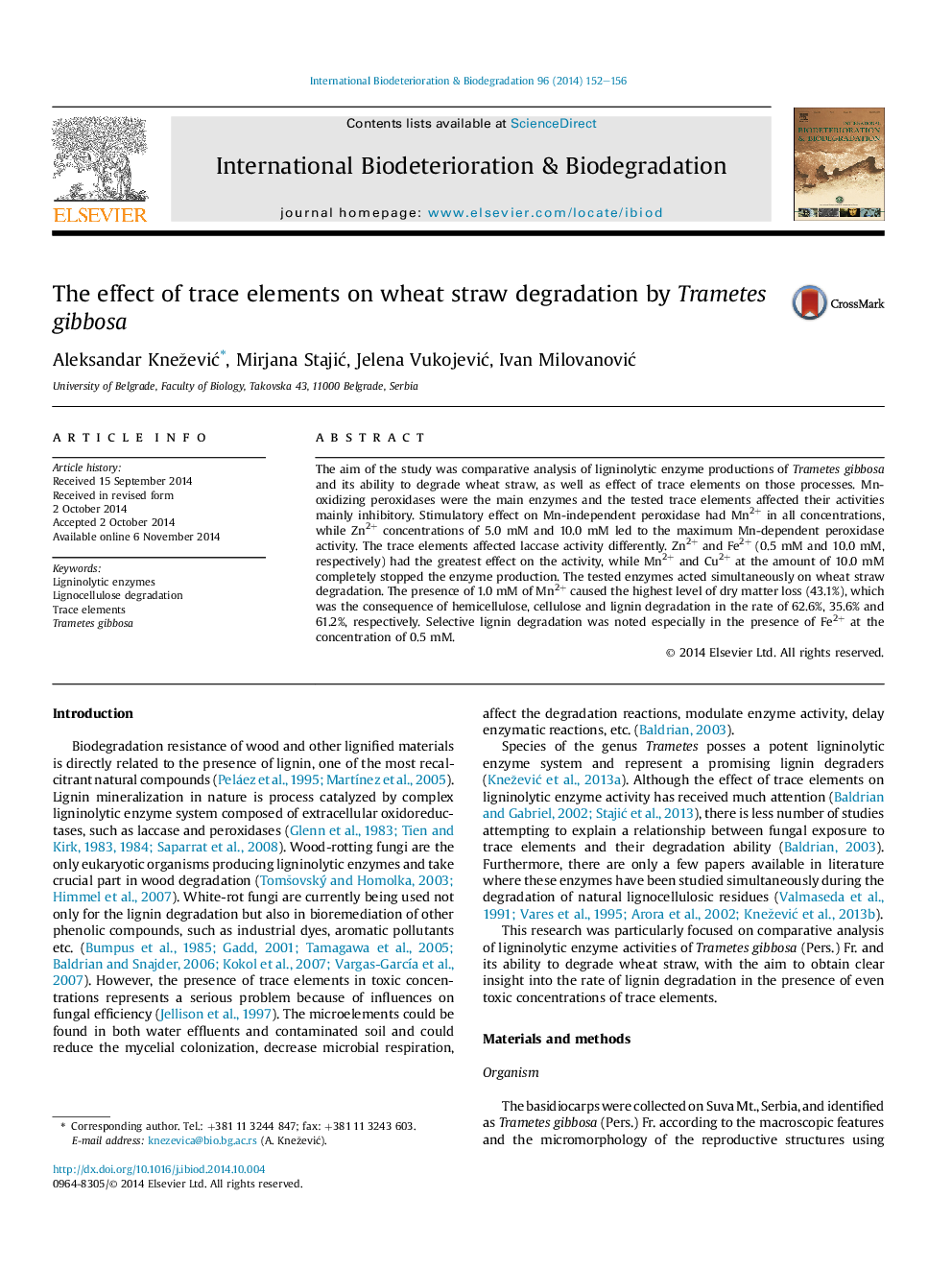| کد مقاله | کد نشریه | سال انتشار | مقاله انگلیسی | نسخه تمام متن |
|---|---|---|---|---|
| 6289243 | 1616321 | 2014 | 5 صفحه PDF | دانلود رایگان |
- Zn (0.5Â mM) and Fe (10.0Â mM) had the greatest effect on laccase activity.
- MnP and MnIP were strongly stimulated by Zn and Mn.
- Mn-oxidizing peroxidases have the crucial role in wheat straw lignin degradation.
- Absence of laccase activity significantly decreased rate of lignin degradation.
- Fe (0.5Â mM) has the best selective effect on lignin degradation.
The aim of the study was comparative analysis of ligninolytic enzyme productions of Trametes gibbosa and its ability to degrade wheat straw, as well as effect of trace elements on those processes. Mn-oxidizing peroxidases were the main enzymes and the tested trace elements affected their activities mainly inhibitory. Stimulatory effect on Mn-independent peroxidase had Mn2+ in all concentrations, while Zn2+ concentrations of 5.0Â mM and 10.0Â mM led to the maximum Mn-dependent peroxidase activity. The trace elements affected laccase activity differently. Zn2+ and Fe2+ (0.5Â mM and 10.0Â mM, respectively) had the greatest effect on the activity, while Mn2+ and Cu2+ at the amount of 10.0Â mM completely stopped the enzyme production. The tested enzymes acted simultaneously on wheat straw degradation. The presence of 1.0Â mM of Mn2+ caused the highest level of dry matter loss (43.1%), which was the consequence of hemicellulose, cellulose and lignin degradation in the rate of 62.6%, 35.6% and 61.2%, respectively. Selective lignin degradation was noted especially in the presence of Fe2+ at the concentration of 0.5Â mM.
Journal: International Biodeterioration & Biodegradation - Volume 96, December 2014, Pages 152-156
